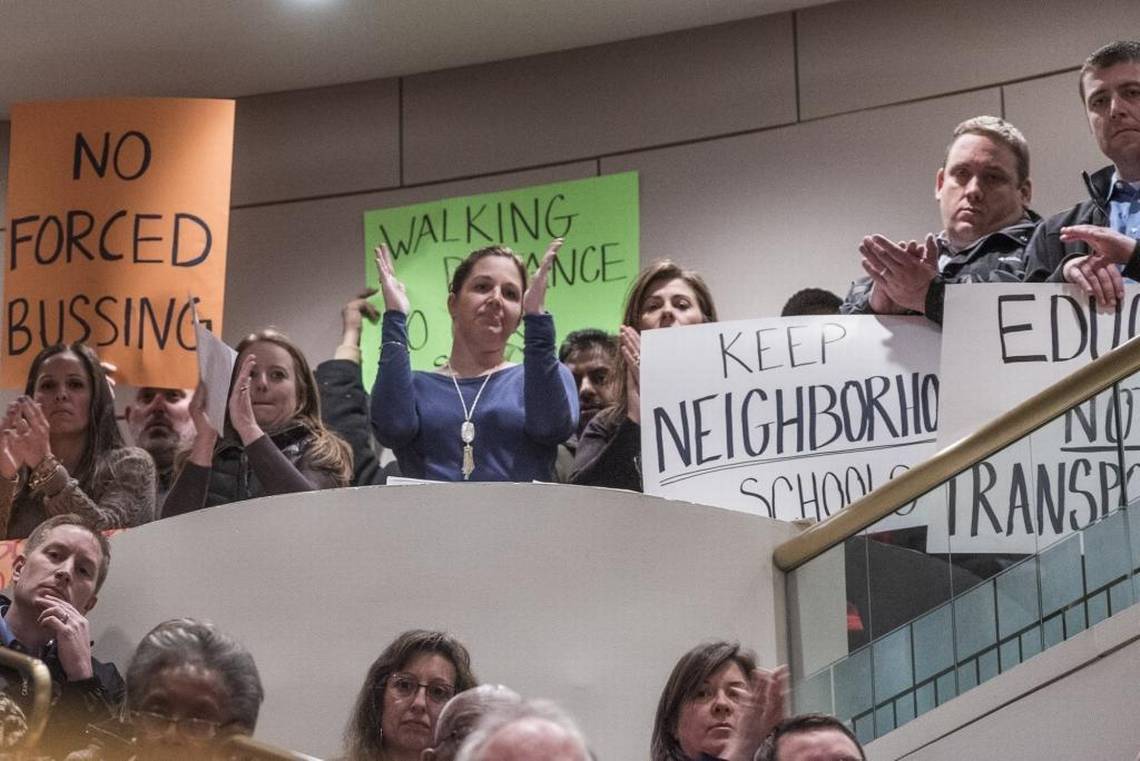Here’s why neighborhood school advocates may like new CMS boundary plan
Those who have worried that Charlotte-Mecklenburg Schools’ long-awaited boundary proposal would disrupt their schools and neighborhoods will likely be relieved when Superintendent Ann Clark unveils it Tuesday, two board members say.
But others, who have spent two years pushing for a plan to break up racial and economic isolation in dozens of high-poverty urban schools, are likely to be disappointed.
“Conservative” is the label Ruby Jones, a black Democrat, and Rhonda Lennon, a white Republican, both used to describe the boundary plan. Both say it avoids major shakeups – though in a district with 147,000 students, even minor change could affect thousands of students.
“I don’t anticipate any mass uprising or hysterics over it,” said Jones, who represents northeastern Charlotte.
“I think it will be well received” in the northern suburbs, said Lennon, who represents that area. “It is not uprooting the vast majority of students.”
Suburban residents have been especially vocal in warning that drastic changes could undermine successful schools that unite communities and boost property values, sending families fleeing for charter, private or neighboring county schools.
Clark’s plan will be presented Tuesday, with a public hearing and board vote in May. In addition to boundary changes, it may include revisions to grade configurations, such as splitting combined elementary-middle schools.
As for hopes that CMS could bring about greater diversity in a district where about 60 percent of students are poor and 70 percent are nonwhite, Jones said housing segregation and the array of options available made sweeping change impractical.
“It’s just a small slice of the big pie of what needs to happen,” Jones said, “but we have to start slice by slice.”
Support for neighborhood schools
A conservative approach is hardly surprising in a year when six of nine board seats are up for election and CMS wants voters to approve bonds for school construction and renovation.
The assignment talks are taking place at a time when the majority of enrollment growth, in Charlotte and across the state, is going to charter schools, which are public schools that don’t report to county districts.
And when CMS did an online poll of parents, students and community members in 2016, schools close to home rated as a much higher priority than diversity. While support for neighborhood schools was strongest in the suburban districts, where schools tend to be high-scoring and majority white, the trend was consistent across all districts.
Proponents of neighborhood schools mobilized to argue against any “busing” plan that would move students out of their communities to balance demographics.
Board members quickly promised they weren’t planning a massive shakeup. Instead, they said they’d use family choice, in the form of expanded magnets and new options to switch schools, to promote voluntary diversity.
Hopes for desegregation
At the same time, talk about confronting the extreme concentrations of poverty that can make it difficult for teachers to teach and students to succeed dominated much of the discussion.
CMS, which gained national fame for its court-ordered desegregation plan in the 1970s, has since become a national symbol of resegregation. Starting in 2002, a student assignment plan based on neighborhood schools and choice has created schools that, like Mecklenburg’s neighborhoods, are racially and economically distinct.
Seventy-six of the district’s 170 schools have poverty levels so high that everyone gets free breakfast and lunch. About half the district’s black and Hispanic students attend schools that are less than 10 percent white.

At Walter G. Byers School near uptown Charlotte, 89 percent of students are black and 98 percent come from neighborhoods rated as low socioeconomic status.
Clark, who retires in June after 34 years with CMS, has spoken repeatedly about making this “our moment” to shape history and promote school diversity. The resegregation of Charlotte schools drew national attention last fall, after mass protests and street violence broke out in the aftermath of the September police shooting of Keith Lamont Scott.
And just last month, when community leaders unveiled a report summarizing two years of research into economic opportunity and upward mobility, they called on the community to support the CMS board in taking “bold and courageous” steps to reduce concentrations of school poverty.
Big unknowns remain
In 2016 the district paid the Massachusetts-based Alves Educational Consultants Group $135,000 to create a new diversity rating, using Census data on family income, single-parent homes, English as a second language, parent education level and home ownership to label neighborhoods and schools as low, medium or high socioeconomic status.
Those consultants, who are nationally known advocates for school diversity, said CMS now has the most sophisticated measure of student advantage and disadvantage in the nation. The new socioeconomic ratings were used to award magnet seats for 2017-18, but CMS has yet to release any information about whether they increased diversity or enrollment.
Clark said this week that her staff is still working on magnet assignments, with family notifications expected in early May.
UPDATE: The plan is out! You can view the full summary article here.
At Dupont Real Estate, we know our community and we know our market. Information is key to a comfortable buying process. It is imperative to stay in the know with our always growing Charlotte! We are your Real Estate Resource. If you are looking to buy or sell a home in Lake Norman, Charlotte, or surrounding areas anywhere in NC, SC, or VA. We are here to assist you! Contact Us.








